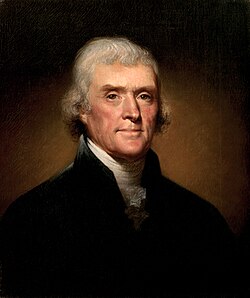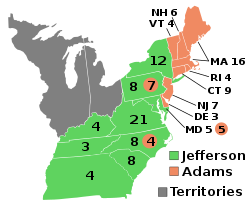This article relies largely or entirely on a single source .(May 2022) |
| |||||||||||||||||||||||||||||||||||||||||||
| |||||||||||||||||||||||||||||||||||||||||||
 County results
| |||||||||||||||||||||||||||||||||||||||||||
| |||||||||||||||||||||||||||||||||||||||||||
| Elections in Rhode Island |
|---|
 |
The 1800 United States presidential election in Rhode Island took place as part of the 1800 United States presidential election. Voters chose four representatives, or electors, to the Electoral College who voted for president and vice president.
Contents
Rhode Island voted for the Federalist candidate, John Adams, over the Democratic-Republican candidate, Thomas Jefferson. Adams won Rhode Island by a margin of 4.3%. All four Adams electors received more votes than the four Jefferson electors and the electoral vote was all for Adams in Rhode Island. Adams’s running mate Charles Cotesworth Pinckney received three electoral votes, and John Jay received one electoral vote. Rhode Island was the only state in the election of 1800 in which an elector “threw away” a vote by not voting for both candidates on a party’s ticket.




